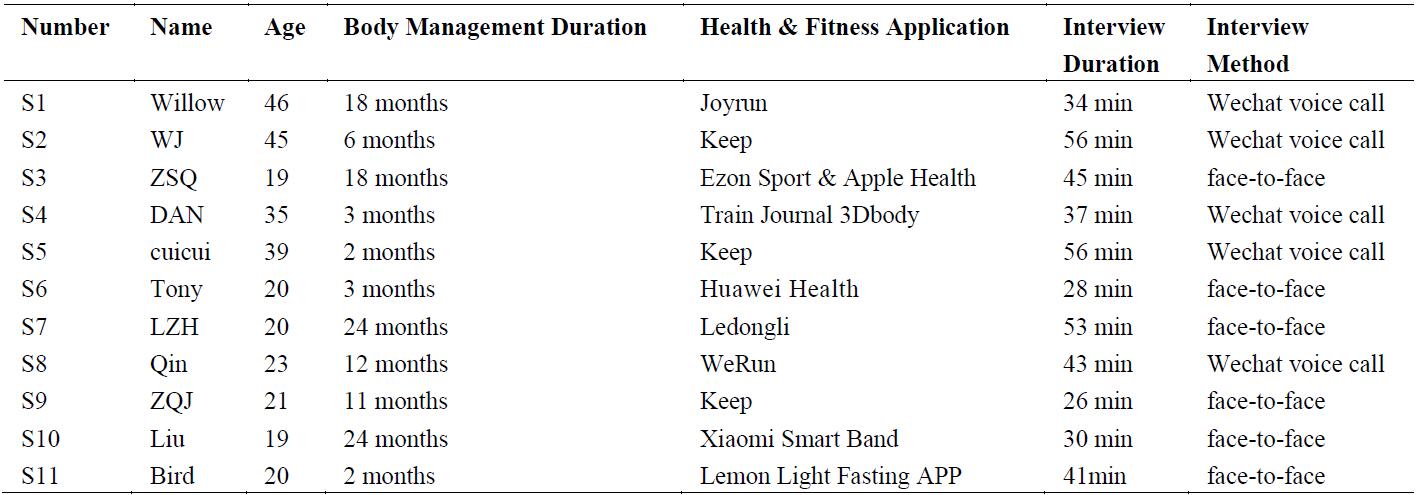Visible Body Anxiety: The Mediatized Management Practices of Quantifying Body Shapes and Physicality
Abstract
The proliferation of fitness and exercise-related social media, applications, and wearable devices has provided individuals with convenient tools for body management. These technological means have enabled the mediatized management of bodies, permeating various aspects of daily life. However, this process has also raised tensions regarding the relationship between individuals and media control. This study adopts media visibility and digital rationality as theoretical perspectives, employing qualitative interviews and participatory observation to explore the impact of fitness applications and devices on users' body management practices. It investigates how users navigate the visible/invisible dichotomy of "highlighting" and "concealing" within the data relationships of "quantifying body shapes." The findings reveal that when users face motivational deficits, they often utilize visual body tracking tools to monitor and record bodily data, enabling real-time observation of bodily changes. While "self-quantification" facilitates body management, it also generates new challenges and anxieties. The prevalence of flow-dominated quantification aesthetics leads users to excessively focus on body image and overly rely on technological tools, thereby neglecting the natural state of the body and self-perception, which may adversely affect users' physical and mental health.
References
[2] Yu, Y. (2023). A study on the continuous usage intention of sports quantitative self-apps based on persuasive system design model (Master's thesis, Zhejiang Gongshang University).
[3] Chen, T. (2024). The uncontrollable “time”: The acceleration of social media's obfuscation of “time” and “space” and the reconstruction of time-space order. Modern Communication, (04), 50–57, 77.
[4] Liu, J. (2021). The realism of 'flow' in the media society: A critique from the perspective of 'data-power'. Modern Communication (Journal of Communication University of China).
[5] Yu, G. M. (2021). The evolutionary logic of future media: The iteration, reorganization, and elevation of "human connection". Journalism, (10), 54–60.
[6] Thompson, J. B. (2005). The new visibility. Theory, Culture & Society, 22(6), 31–51. https://doi.org/10.1177/0263276405059413
[7] Jiang, H., & Kai, X. Y. (2017). Empowerment through “visibility”–how is public opinion made “visible”? Journal of Suzhou University (Philosophy and Social Sciences Edition), 3, 45–55.
[8] Dayan, D. (2013). Conquering visibility, conferring visibility: Visibility seekers and media performance. International Journal of Communication, 7, 139–153.
[9] Dayan, D. (2013). Conquering visibility, conferring visibility: Visibility seekers and media performance. International Journal of Communication, 7, 139–153.
[10] Hu, Y. Q., & Wang, M. Z. (2022). The ontology of visibility as mediaticity: An ontological exploration of the visibility issue. Journalism, 4, 8–19.
[11] He, Z. W., & Dong, H. B. (2019). The spatial production, consumption, and value paradox of mobile short videos from the perspective of visibility. Journalism, 10, 12–19.
[12] Foucault, M. (1977). Discipline and punish: The birth of the prison (Liu, B. C., & Yang, Y. Y., Trans.) (5th ed.). Beijing: Life, Reading, & New Knowledge Sanlian Bookstore. (Original work published 1975).
[13] Bauman, Z. (2002). Liquid modernity (Ouyang, J. G., Trans.). Shanghai: Shanghai Sanlian Bookstore. (Original work published 2000).
[14] Long, J. J., & Yan, B. G. (2017). Research on information visualization design of quantified self and sports apps. Decoration, 10, 105–107.
[15] Xu, T. T., & Deng, J. G. (2021). The co-construction relationship between technology and body in the trend of “quantified self”——A case study of the sports application Keep. Journalism and Writing, 5, 46–53.
[16] Hayles, N. K. (1999). How we became posthuman: Virtual bodies in cybernetics, literature, and informatics. University of Chicago Press.
[17] Hayles, N. K. (1999). How we became posthuman: Virtual bodies in cybernetics, literature, and informatics. University of Chicago Press.
[18] Lu, H. (2011). Uses and gratifications: A labeled theory. International Journal of Journalism, (02), 11–18.
[19] Bandura, A. (1997). Self-efficacy: The exercise of control. Macmillan.
[20] Bandura, A. (1991). Social cognitive theory of self-regulation. Organizational Behavior and Human Decision Processes, 50(2), 248–287. https://doi.org/10.1016/0749-5978(91)90022-L
[21] Long, J. J. (2016). Research on interaction design of fitness apps from the perspective of flow experience. Decoration, 8, 138–139.
[22] Tao, D. F. (2007). The body in consumer culture. Guizhou Social Sciences, (11), 43–50.
[23] Turner, B. S. (1996). The body and society. London: Sage Publications.
[24] Burke, L. E., Wang, J., & Sevick, M. A. (2011). Self-monitoring in weight loss: A systematic review of the literature. Journal of the American Dietetic Association, 111(1), 92–102. https://doi.org/10.1016/j.jada.2010.10.008
[25] Rosa, H. (2018). The Birth of New Alienation: An Outline of Critical Theory of Social Acceleration [M]. Translated by Zheng Zuoyu. Shanghai: Shanghai People's Publishing House.
[26] Lian, S. X., & Deng, D. (2020). Media, time, and the "lie" of modernity: A critical study of the theory of social acceleration. Modern Communication (Journal of Communication University of China), (06), 37–42.
[27] Sunstein, C. R. (2008). Information utopia: How the crowd produces knowledge (Bi, J. Y., Trans.). Beijing: Law Press.
[28] Hu, H. H. (2020). How rational individuals challenge new digital ethics in the cocoon of the room. Youth Journalist, (16), 50–51.
[29] Peng, L. (2020). Multiple factors leading to information cocoons and the paths to "breaking the cocoon." Journalism, (01), 30–38, 73.
[30] Pan, W. J., Zhou, X., & Tang, Z. (2024). Complex emotions and self-objectification: The impact of TikTok use on women's desire to change their appearance. Journalism University, (07), 74–88, 120.
[31] Wang, L., & Chen, Z. Y. (2022). The value flow, behavioral logic, and adjustment policies of the "lay flat" subculture on social media. Chinese Youth Studies, 11, 13–21.
[32] Han, M., & Lu, S. Y. (2023). Returning to China's cultural counter-identity: The discourse escape and consensus feedback of the internet buzzword "lying flat." Contemporary Youth Studies, (05), 22–33.
[33] Hu, Y., & Nian, X. (2022). Freedom and domestication: Short video creation under the control of flow, algorithms, and capital. Social Science Front, (06), 144–165, 282.


This work is licensed under a Creative Commons Attribution 4.0 International License.
Copyright for this article is retained by the author(s), with first publication rights granted to the journal.
This is an open-access article distributed under the terms and conditions of the Creative Commons Attribution license (http://creativecommons.org/licenses/by/4.0/).








1.png)














